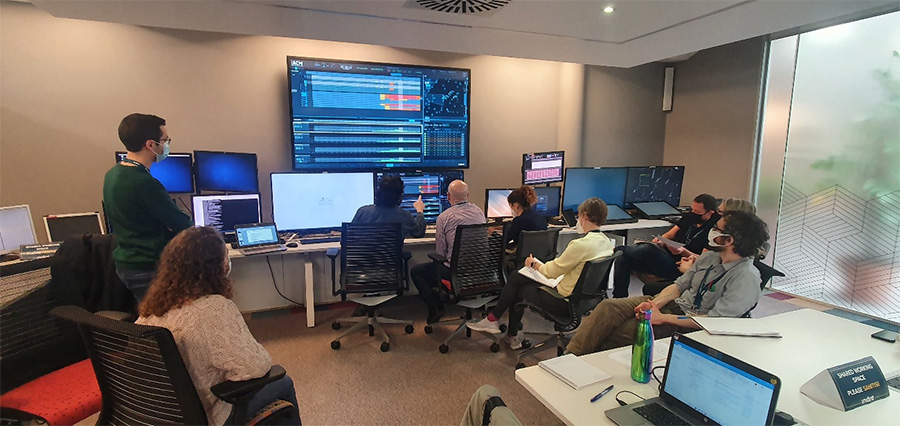Earlier this year, SESAR research partners fine-tuned a tool to optimise arrivals and departures in high density and complex airspace. The tool works in near real time to calculate periods of peak demand on particular routes and proposes solutions to share out the traffic and improve the environmental efficiency through optimised climb and descent profiles.
The research was carried out by UK air navigation service provider, NATS, and Indra, who ran a simulation to assess the systemised airspace management prototype (SYSMAN) and air traffic control procedures within systemised airspace around London (extended terminal manoeuvring area - E-TMA) for arrival and departure procedures, as part of work on the SESAR industrial research project, Enhanced Arrivals and Departures and the SESAR Solution PJ.01-W2-08B.
SYSMAN aims to significantly enhance how air traffic controllers identify and act upon imbalances of demand and capacity simulated airspace. The tool continuously monitors the predicted demand/flow rates for defined Fixpoints, route-segments, or sectors, identifying over-demand periods across given timeframes. When demand on either inbound or outbound flows is predicted to exceed specified limits, the user can look at options to balance demand across routes, or can ask the tool for automatic system suggestions.
The route balancing strategy considers the level of demand on secondary routes – e.g. inbound and outbound flows to adjacent airports – to suggest use of an alternative standard instrument departure (SID) or standard instrument arrival (STAR) routes for particular aircraft, or alternative cruise routes for overflights. This option, which takes advantage of the systemised airspace and performance-based navigation route structures (e.g. offload / parallel arrival and departure routes), aims at a system-wide optimisation of the flows, and a more consistent and manageable delivery of the departure streams into the en-route airspace.
The arrival scenario focused on the eastern sectors of London E-TMA, looking for bunching and capacity issues both on the entry and merge points/stacks, with the route options based on the current airspace structure.
The departure scenario focused on the western sectors, identifying issues on several of the departure routes, and used a more experimental systemised structure, with four parallel routes covering E-TMA airspace.
The validation platform made use of a prototype based on iACM System (Indra Airspace Capacity Manager), which was fed with simulated Network Manager traffic data for the pre-tactical phase, and included a connection with Indra’s next-generation air traffic management system iTEC (interoperability Through European Collaboration) for an improved simulation of the tactical phase, and simulated Heathrow AMAN (arrival manager) messaging.
 SYSMAN verification activity took place at Indra’s UK premises alongside NATS and controller in February 2022.
SYSMAN verification activity took place at Indra’s UK premises alongside NATS and controller in February 2022.
The solution is part of the Enhanced Arrivals and Departure project, which has received funding from the SESAR Joint Undertaking within the framework of the European Union's Horizon 2020 research and innovation programme (872085).
